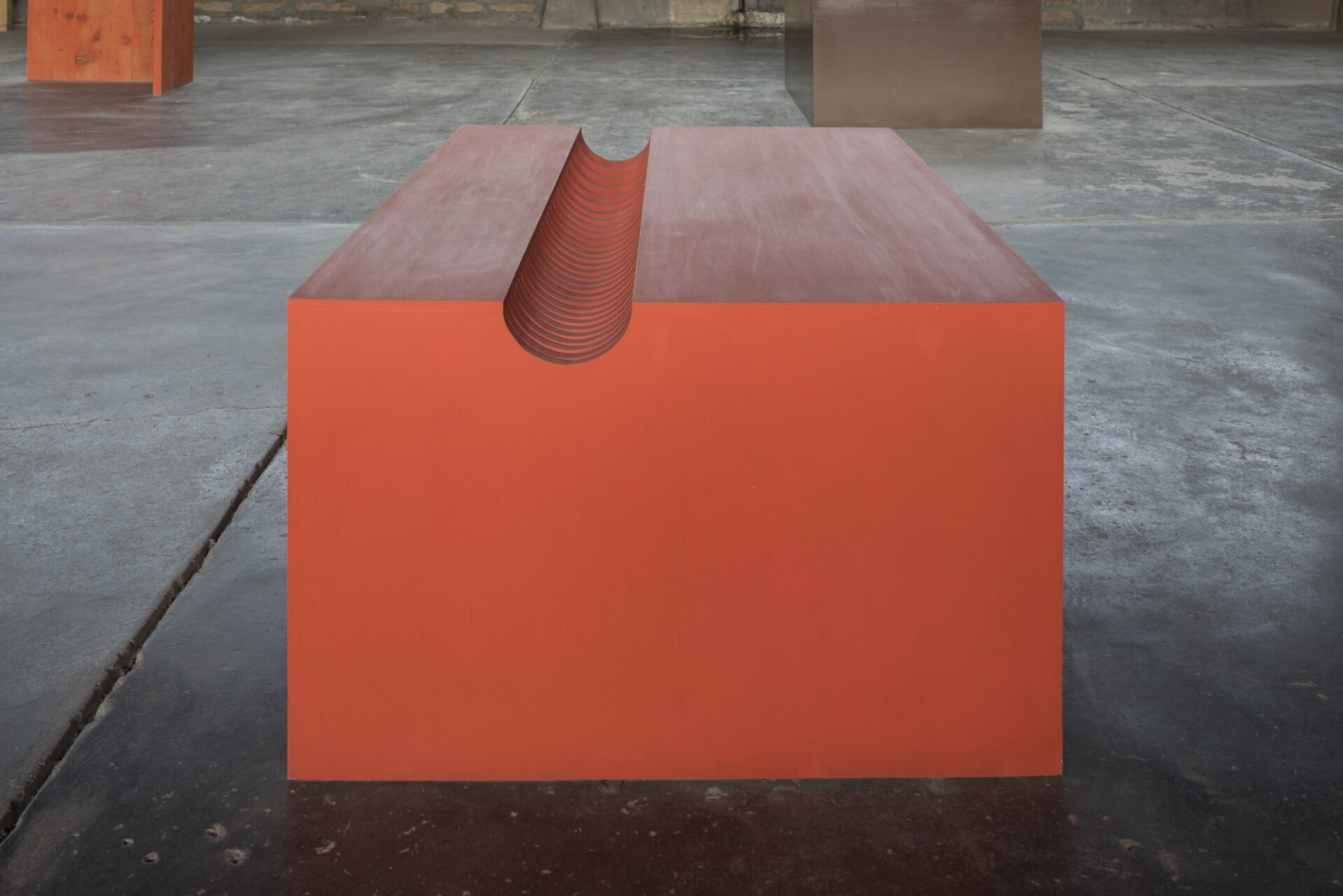The semicircular void on the top plane of this work has twenty-eight interior subdivisions spaced along the width of the piece according to a numerical scheme. Seven interior panels are evenly spaced across the width of the object, and these equal sections are subdivided so that the first two sections contain one interior panel each, the third contains two, the fourth contains three, the fifth contains four, and so on.1 Donald Judd used the wood removed from the interior panels of this piece to make another work: “The idea of the progression occurs in the red wooden box with the semi-circles cut out of the divisions. . . . the first real wooden progression was done from the semi-circles left over from that box.”2
Judd discussed this work and the development of the idea of progression in a 1968 interview with Lucy R. Lippard, stating:
DJ: I was thinking about some kind of order that didn’t involve this compositional order that everything had, which seemed to have such a general character and to, you know, imply an underlying order of some kind of things—
LRL: A general underlying order?
DJ: Yeah. So the progression seemed like a very brand-new thing to me.
LRL: I think it was for most artists. We were all very naive—I mean, even paying attention to progression, because—
DJ: I don’t mean progression as a thing; I mean being able to use some other kind of order, an alternative to all that composition, because at the time, there was almost no other thing that I was aware of. When I did the progression, it seemed like an absolute alternative to all other kinds of form.3

